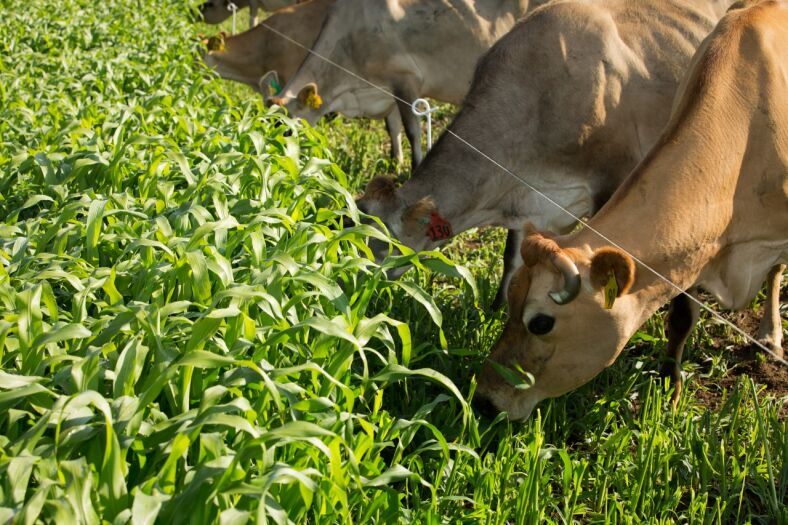
Articles
Late planted summer feed options

Farmers in warmer districts know that securing their summer or autumn feed supply is of utmost importance.
If early spring planting conditions are not favourable and small seed crops experience challenges, there are still a few summer crop options for farmers to consider. Two highly successful summer feeds include maize, for silage and greenfeed, and a forage sorghum or sudan grass.
Both maize and forage sorghum/ sudan are drought tolerant, allowing good crop establishment even in dry conditions.
A key advantage of maize is its large seed, which can be planted into the soil moisture zone and thrives even when planting conditions are dry.
Maize is a deep-rooting plant with a summer water use efficiency three times that of pasture. It will continue to accumulate yield long after shallow rooted species have stopped growing.
While maize is traditionally fed as silage, it is incredibly flexible and can be used as a greenfeed crop for early summer use. If you don’t need the feed prior to silage harvest time, it can be ensiled.
The feed value for greenfeed maize is in the range 10.3-10.8 MJME/kgDM, with higher energy levels being achieved as the grain content increases. Greenfeed maize typically has slightly higher (9-10%) protein levels than maize silage.
Crops can be break fed or chopped using a maize harvester or a flail-type mower. Feeding behind an electric wire reduces crop wastage from trampling.
There is just one caution: care should be taken when green-feeding crops have high amounts of grain present, as excessive grain intake can lead to acidosis - also known as grain overload.
If you are satisfied with your current level of maize grown on farm, consider planting a forage sorghum hybrid, such as Pioneer® brand Bettagraze.
These hybrids are excellent options for summer feed in warmer districts, producing good yields of moderate-quality feed in a relatively short time-frame - even under dry growing conditions.
Because they grow rapidly, crops can be grazed or harvested in as little as 35-45 days after planting for first grazing, with further grazing able to be achieved at regular intervals.
Key benefits of Bettagraze include a larger seed that can be planted into the soil moisture zone; rapid early growth and quick recovery after grazing; delayed flowering for easier management; and high sugar content, fine stems and a high leaf-to-stem ratio for excellent palatability and good feed value.
Like maize, Bettagraze is versatile. It can be grazed, but if the feed is not required it can be harvested as silage or hay and stored for feeding at a later date, when there is a genuine feed deficit.
When harvested at the optimum stage (80-100cm in height) Bettagraze has good energy and protein levels.
If you’re interested in discussing growing maize for greenfeed or silage, or Bettagraze, contact your local Pioneer representative.
